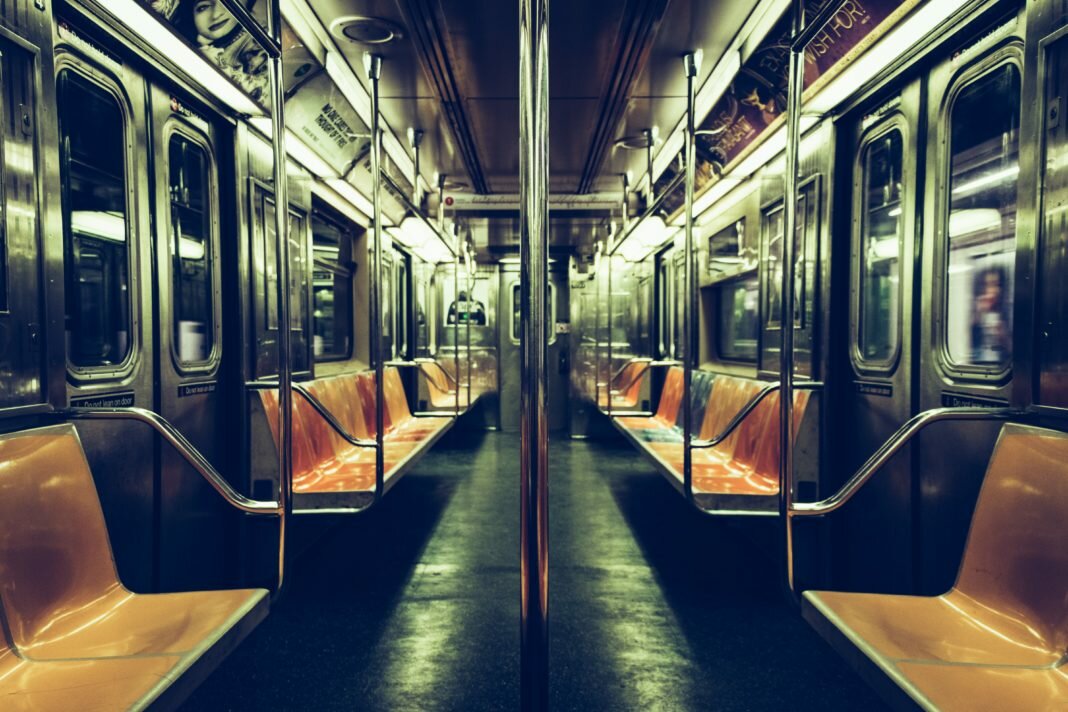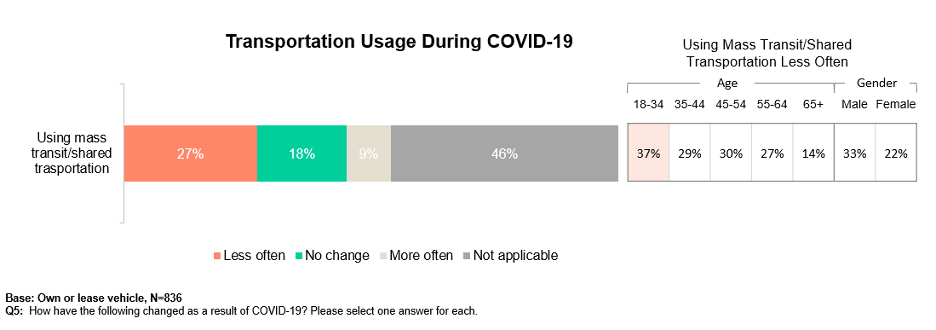Brief • 3 min Read

27% of the general population are using mass transit less often during the COVID-19 crisis. This number spikes to 37% in those aged 18 to 34. Sheltering in place and fear of crowded spaces have spurred this decline.

At the same time, over half of people are driving less for personal reasons and about a third are driving less for work. The freedom of mobility is being trumped by the need for social distancing and personal space, both personally and professionally. As the demand for vehicle trips decreases, 27% of respondents are using fewer household vehicles as a result of COVID-19 and may become accustomed to a reduced household fleet in the future.

How these mobility patterns may resume or be altered more permanently in the post-COVID-19 recovery period remains to be seen, but may certainly impact future commuting patterns and mobility choices. Businesses have invested more heavily in technology to enable a remote work force and may decide that this investment combined with observing continued productivity from at-home workers could make a case for less office time in the future.
Subscribe for more Insights
Subscribe to our newsletter for the latest trends in business, politics, culture, and more.
Related Content









